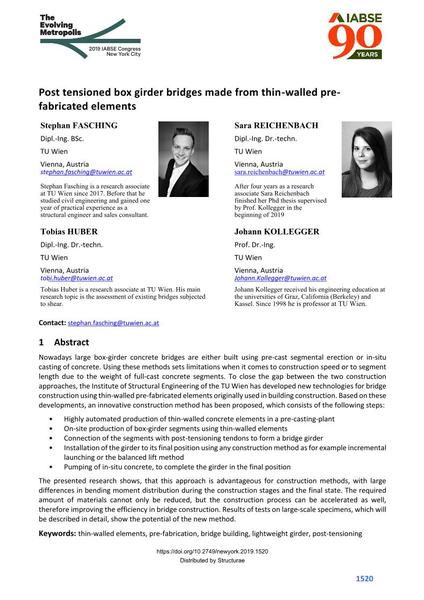Post tensioned box girder bridges made from thin-walled pre- fabricated elements

|
|
|||||||||||
Détails bibliographiques
| Auteur(s): |
Stephan Fasching
(TU Wien )
Sara Reichenbach Tobias Huber (TU Wien) Johann Kollegger (TU Wien) |
||||
|---|---|---|---|---|---|
| Médium: | papier de conférence | ||||
| Langue(s): | anglais | ||||
| Conférence: | IABSE Congress: The Evolving Metropolis, New York, NY, USA, 4-6 September 2019 | ||||
| Publié dans: | The Evolving Metropolis | ||||
|
|||||
| Page(s): | 1520-1525 | ||||
| Nombre total de pages (du PDF): | 6 | ||||
| DOI: | 10.2749/newyork.2019.1520 | ||||
| Abstrait: |
Nowadays large box-girder concrete bridges are either built using pre-cast segmental erection or in-situ casting of concrete. Using these methods sets limitations when it comes to construction speed or to segment length due to the weight of full-cast concrete segments. To close the gap between the two construction approaches, the Institute of Structural Engineering of the TU Wien has developed new technologies for bridge construction using thin-walled pre-fabricated elements originally used in building construction. Based on these developments, an innovative construction method has been proposed, which consists of the following steps:
The presented research shows, that this approach is advantageous for construction methods, with large differences in bending moment distribution during the construction stages and the final state. The required amount of materials cannot only be reduced, but the construction process can be accelerated as well, therefore improving the efficiency in bridge construction. Results of tests on large-scale specimens, which will be described in detail, show the potential of the new method. |
||||
